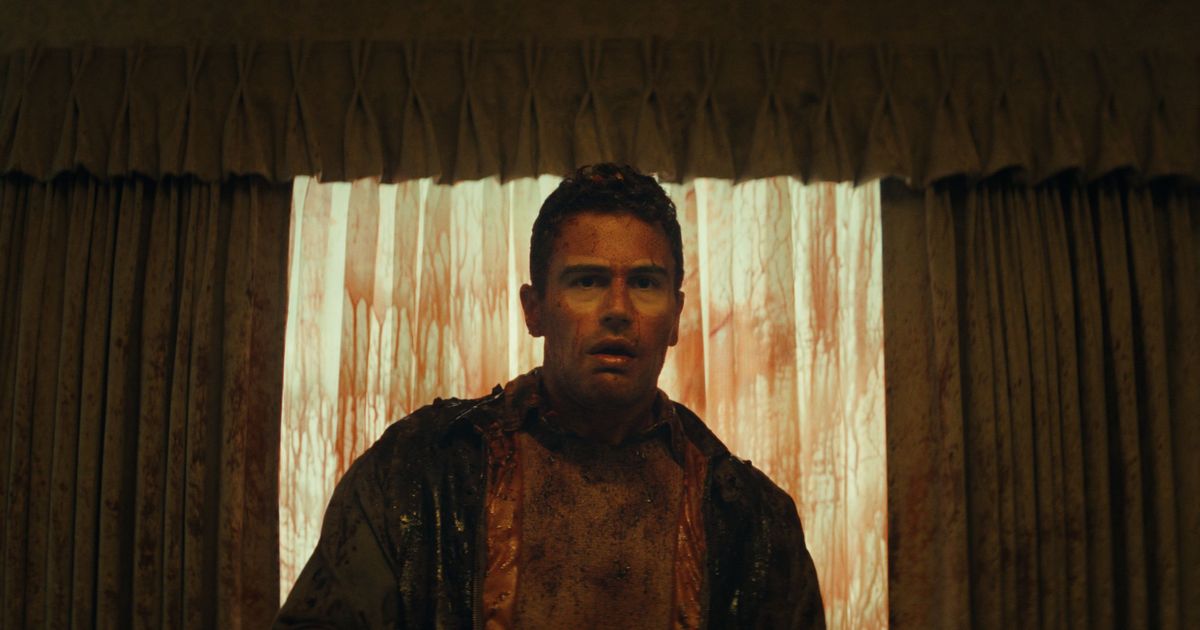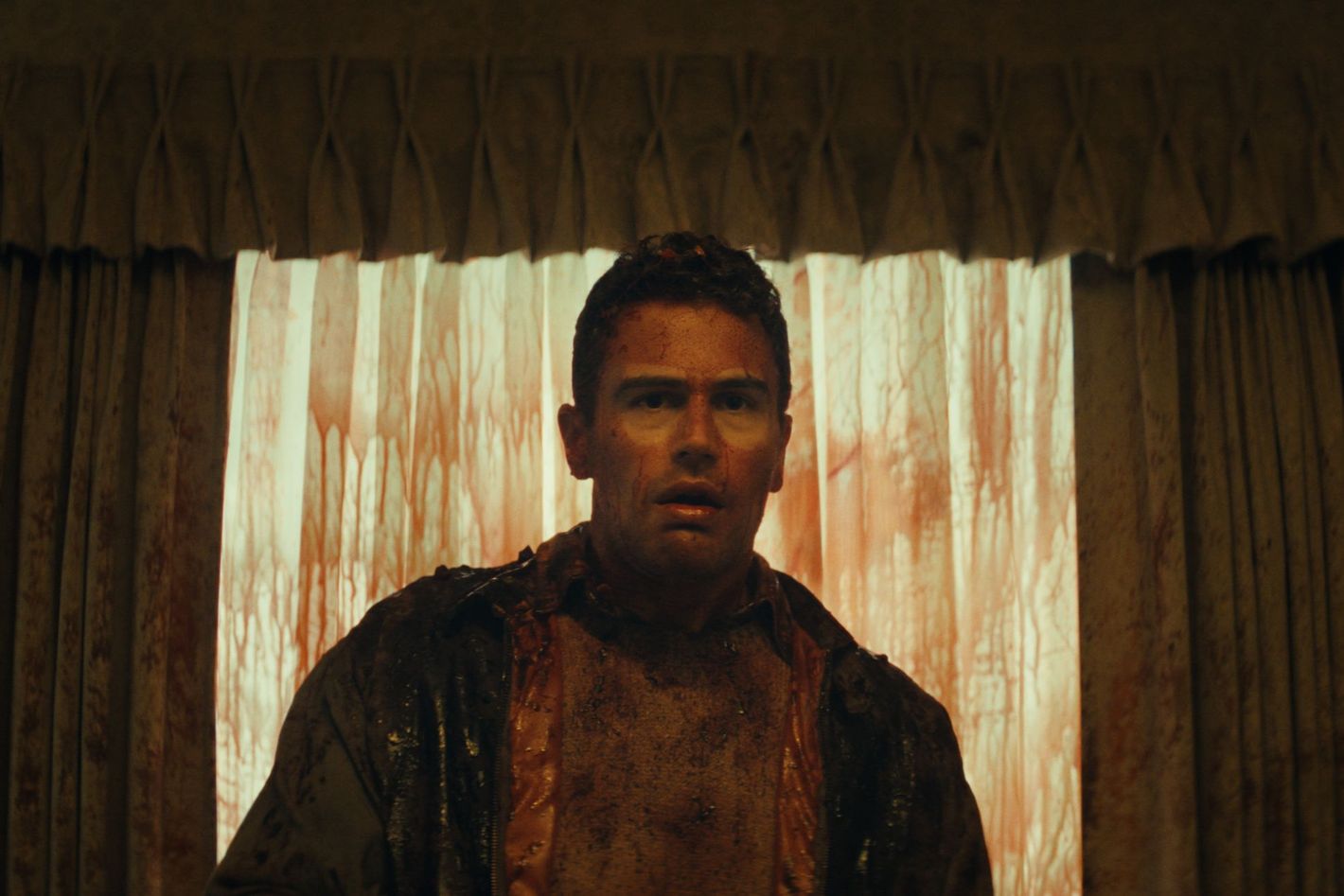The Monkey Has Good Kills, But No Soul
The latest Osgood Perkins movie, adapted from a Stephen King story, is a fine diversion — if you ignore the gaping hole at its center.


In adapting a Stephen King short story, director-writer Osgood Perkins clearly delights in crafting explosive, gory kills meant to spark a laugh more than terrify. Over the course of the film’s hour and 38 minutes, Perkins’s thinly drawn characters are set aflame, their heads are turned to vague viscera by bowling balls or made jelly by wild trampling horses, there is splatter from unforeseen shotgun wounds and unspooled intestines pulled taught by surprise harpoons to the gut. Each event is a freak accident that harkens to Final Destination-level hijinks but aims for more black comedy. It’s the kind of movie primed for midnight screenings. It is less intrigued with the moral portent of its characters’ dilemmas than it is interested in snickering at their fate, giving the film a vaguely nihilistic air. Of course, all machinations are born of a cursed monkey toy that proves impossible to get rid of, whether hacked to pieces or thrown down a well. The harsh, circus twang of the music that plays as it bangs gravely on a drum, teeth bared in a grimace below its depthless eyes, rattles more in the way of annoyance than fear.
Even with its inventive kills and tight runtime, I found myself jotting down notes to myself as I watched: Can this movie end? I just don’t care. The problem is that The Monkey has a hole at its center. It isn’t comedic enough to distract from the fact that the film traffics in rote archetypes, and it doesn’t quite pluck the heartstrings of its audience over the ragged inheritance from fathers to their sons either. The Monkey begins its jaundiced tale on the adolescence of twin brothers, Hal and Bill (Christian Convery), who are a study in contrasts. Hal, the true protagonist, is a wilting flower — easily bruised and endlessly bullied, especially by Bill. Bill mistakes smarm for charm, curses wildly, and treats Hal like a punching bag, seemingly convinced the difference in their birth order is marked by years not minutes. Their mother, Lois (Tatiana Maslany), does her best taking care of them, even as she reels from the unexplained disappearance of her pilot husband Petey (played by Adam Scott, who appears once in the memorable opening scene). Their father couldn’t get rid of the monkey, and so too are the sons beleaguered by it when they find it in a prim, robin’s egg blue hatbox in his room. Life quickly unravels from there as strange deaths in their small town pile up. The boys eventually pack up, move to Maine with their Aunt Ida (Sara Levy) and Uncle Chip (Perkins in dirtbag uncle mode and having fun with it), and throw the monkey down the aforementioned well.
Twenty-five years and a few more deaths later, the monkey seems dormant. Bill and Hal have become men, but haven’t quite grown up. They’re now played by Theo James, whose good looks could make-up for both twins’ deficient personalities. Bill’s smarm has calcified into a kind of mad obsession; Hal is a starkly lonely and cowardly man. Carrying along the thread of inheritance, Hal is a father to teenager Petey (Colin O’Brien), whom he contacts only once a year for fear that associating with him places a target on anyone’s back — the monkey pointing dead center. Hal’s lack of involvement has inspired his ex-wife’s new partner, played by a preening Elijah Wood in the film’s most successful comedic scene, to outright adopt Petey, potentially severing Hal’s pretense of care if it goes through. Familial strife is the film’s backbone, but what a poor and broken backbone it is.
Horror films primed on increasingly gory demises have always trafficked in archetypes. The dumb blonde. The head cheerleader. The gruff jock. These can operate as a crucial shorthand within the world of the film, but for the deaths to really hit with a gut-punch force, you have to feel something for the people — whether it’s hope that a beloved character survives or eagerness to witness a grating character perish. The Monkey has none of that pull. These aren’t characters or even archetypes but the bare sketches of human beings. No one in the film even seems that ruffled from the losses they endure, save perhaps for the brothers. But their storyline mostly brings to mind the fact that Maslany is too good an actor to be playing roles like this.
The Monkey continues Perkins’ brand of glossy, inert horror with the kind of cinematography and blocking that calls the wrong kind of attention to itself. Longlegs is more offensive in that regard because it took itself so damn seriously despite exploring nothing of merit with any panache. It was a stellar marketing campaign in search of a better film. But with this movie, Perkins tries to infuse a comedic edge to his work that indeed offers some manner of levity — whether it’s an inexperienced priest bumbling through a somber sermon or the grim breakdown of a realtor fluttering through a description of all the recent death in town. If anything, I wanted that humor to be punchier, more brutal. Instead, there are just more gruesome deaths, growing exceedingly ridiculous as the story continues. But a horror film can’t survive on kills alone, and the narrative of The Monkey — for all the movie’s craft and pedigree — is the worst thing a horror saga can be: boring.








